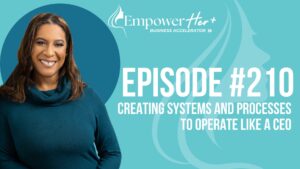As a small business owner, you invest a lot of your time and resources into your marketing efforts coming up with a plan and developing campaigns along the way to support your business goals.
Sadly though, all too often your plans fail to produce the return you were hoping for. This article will take a look at some of the typical ways even a sound marketing plan doesn’t capture the lasting and impactful financial gain you dreamed of and what you can do to avoid this.
#1. Ensure you have the resources to deliver on your plan
Our first point is that a Marketing Plan is just that, it’s a set of directions and action steps to take in order to accomplish marketing success. However, without moving forward and taking action on these steps, they are just words and thoughts. You can’t build a house by just holding a hammer, you have to first have a plan and then start taking action to put the pieces together. Small business owners that actually have a Marketing Plan in place often still don’t see results because they lack the resources and manpower to execute the plan they have put together.
To overcome this, when the plan is being drafted and planned out, it is important to always ensure that the resources available are taken into account. Does the business have the manpower to drive the elements of the plan forward and a marketing budget to implement all of the activities within the plan? This is an early conversation that needs to take place as the plan is being developed because if the business is not committed to supporting the strategy and plan, what is the point of it? Remember, it doesn’t always mean you need to hire a dedicated marketing person, there are outsourcing options as well, but someone needs to stay on top of everything.
#2. Ensure you have Momentum
Once you have confirmed you have the resources necessary to move forward on your plan now you need – momentum. The most successful companies and brands are all continually working at improving what they do. You won’t see them executing on sporadic advertisement efforts. They have a sustained approach to ensure that momentum is continually maintained so that their marketing activity continues to deliver.
If you think about a huge fly-wheel, getting the wheel spinning takes a huge amount of effort. However, once you have got that wheel spinning, it takes a hugely disproportionate amount of energy to keep it spinning, or even to accelerate it. You reap greater rewards with much less effort once the thing is going.
When you finally have a completed Marketing Plan, there is a huge sense of relief and excitement. You are ready to see results … NOW! However, the first few days of implementing a marketing strategy plan can seem exhausting, there is so much to sort out and get in place before you can start to reap the benefits. However, once you have done the hard set-up work, you will find that your return on investment will accelerate.
Where many small businesses go wrong is that they put in the effort to create the plan, are excited to have it started, and get the momentum building, but for some reason, they start to lose momentum, and things start to slow down. Life starts to happen, the key stakeholders in the company now return to business as usual. So it is important to have one key person dedicated to your seeing your marketing plan succeed.
#3. Ensure you are aware of changing external factors
A Marketing Plan is always representative of the plans at that moment in time. Meaning the plan you create is correct for your business, at that moment in time with all the information at your disposal and the environment within which you currently operate. The problem is that the environment within which you operate is always changing. Just take a look at what has happened in 2020 – who could have foreseen Covid-19 having such an impact on small businesses everywhere just many owners were mapping out their plans for the year.
Covid-19 is an extreme example but although your own business and its offering may not have dramatically changed, a number of factors could heavily influence customer demand for your products and services.
The key is, at the time when you are drafting the Marketing Plan, to consider all of the potential impacts on your business which could move the goalposts. When you take the time to consider these carefully when they happen you are in a better position to react swiftly in the best interests of the business.
#4. Ensure you are not losing sight of the customer
A classic mistake that can lead to marketing failure is simply losing sight of your customers what they actually need and want. Their true desires, motivators, and stressors are paramount to reaching and connecting with them. Many business decisions are made from the business’ perspective, rather than the customer’s perspective. It is only natural that we tend to look for ways that make things more efficient or profitable for us, but if that has a detrimental effect on the customer experience, then you rethink that process or you will start to lose out big time.
It seems obvious but it is so easy to fall into this trap without recognizing that it is even happening. Will new technology help or hinder the customer? Could a change in our business processes make things easier or harder for the customer? May bundled packages simplify the purchasing process or create customer confusion?
One way to help with these decisions is to get advice from people outside of the business, who will not look at things from the business perspective. Use advisors, consultants, or peer groups to take a look at things from the outside-in. As a business owner, this is always one of the hardest things to do.
#5. Ensure you have clear CTAs
A point some business owners till miss is the whole point of marketing is to try to persuade someone to do something. You must have what is called a Call to Action.
Never make the mistake of assuming that people are going to do something just because you have told them how great your business, product or service is. If you want them to visit your website for more information – make it easy for them to do so and ask them. If you have something you want them to “buy now” – make it obvious. If you have a pdf, whitepaper, a brochure, or a coupon that you want them to download – then tell them.
If there is no call to action at all, guess what will happen – nothing.
Consider when was the last time you actually responded to a marketing communication without being asked to do so? You could have the best marketing strategy in place, and a clear plan of action that is well resourced, but if your communications fail at the last hurdle, then it will all be wasted investment.
While this article is a great start, it is nowhere near a comprehensive list of all the things you need to ensure you have in place to be closer to marketing success. But it is a starting point for many of you. If you need further insight or if you are seeking some expert help on developing and maintaining a Marketing Plan don’t hesitate to schedule a free consultation with us today so we can get you started in the right direction.















